If you know anything about The Fugs at all, it’s probable that you know them for one of the greatest anti-war “protests” ever — the time they were part of an effort to levitate The Pentagon. It’s well-described in Norman Mailer’s “Armies of the Night,” which brings things full circle, as The Fugs took their name from a euphemism forced on Mailer by his publisher two years earlier. Although many counterculture figures were involved, the primary drivers for this particular protest were Michael Bowen (creator of the Be-In) and Yippies Jerry Rubin and Abbie Hoffman. They were part of planning for a major protest to be held late in 1967, which initially was to feature an occupation of the Capitol. That shifted in focus to the Pentagon, a better symbol of the war and one whose five-sidedness lent it some occult significance. And with that thinking about what the Pentagon represented, that it represented evil, a protest and occupation didn’t make quite as much sense as an exorcism. Bowen added to that the idea of levitating the Pentagon, lifting it into the air, vibrating it until the evil had fled. Which, of course, would lead to an immediate end to the war. While most of the organizers seemed to get that they were participating in street theater, Bowen appears to have actually believed it was going to happen. Ed Sanders of The Fugs was at the center of it, proclaiming a “Grope for Peace,” singing “Out, demons, out!” A recording of what went on that day is featured on this album (YouTube it here). And if you want to read more, and I think you should, I recommend this Smithsonian article or this much longer oral history from Arthur Magazine.
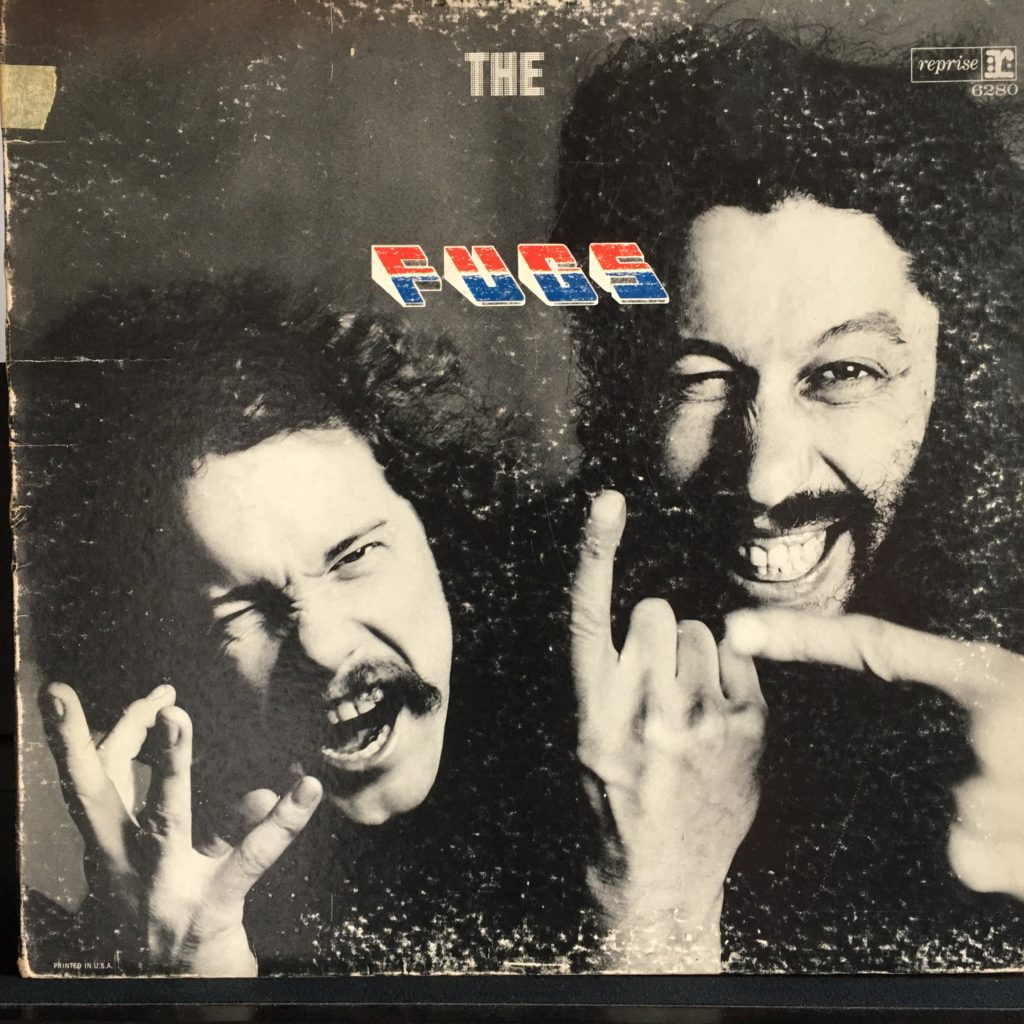
Between that and the opening track of “Turn On, Tune In, Drop Out,” you’ve got a pretty solid idea of what The Fugs were all about, with regard to social change and protest. Much of the rest of the album, including the “Aphrodite Mass” in five parts (“Litany of the Street Grope,” “Genuflection at the Temple of Squack,” “Petals in the Sea,” “Sappho’s Hymn to Aphrodite,” and “Homage to Throb Thrills”) is heavily, explicitly sexual in a way that it really wasn’t possible to be in 1968. Like the First Album, much of this material could easily have been considered obscene at the time. But the times were changing. Now it’s hard to imagine how shocking this was to hear on an aboveground record, on a major record label (Reprise’s Mo Ostin let them release uncensored, unlike their previous labels).
Musically, this is pretty good, light years beyond the First Album (this was their fourth), because they now had more serious musicians (like Danny Kortchmar) playing for them. “Wet Dream” is a doo wop violation of the queen of the prom, delivered with skill. Other songs are quality bits of psychedelia and war protests (“Burn my belly with napalm jelly,” they sing on “War Song,” and if that ain’t punk…), and of course there’s the long experiment of “Aphrodite Mass.”
I’ve had this about as long as the First Album, probably got them both in 1979 in the beginning of the height of my hippie period. I was way into what they were about way into the shock, the political theater, the joyous disregard for convention. Around that time, maybe it was 1980, Ed Sanders played The Jab. He had invented a playable necktie (you can see him playing it here), I remember he played some music on it and recited what I recall was Sumerian poetry. He was playing to a crowd of few people in that legendary student nightclub, and probably fewer still who knew who he was or what he was about. It was interesting, not world-changing but I was glad I had seen him.
You’ve got to be in a certain headspace to listen to The Fugs, however. They’re very much a period piece, but clever, groundbreaking, and important.

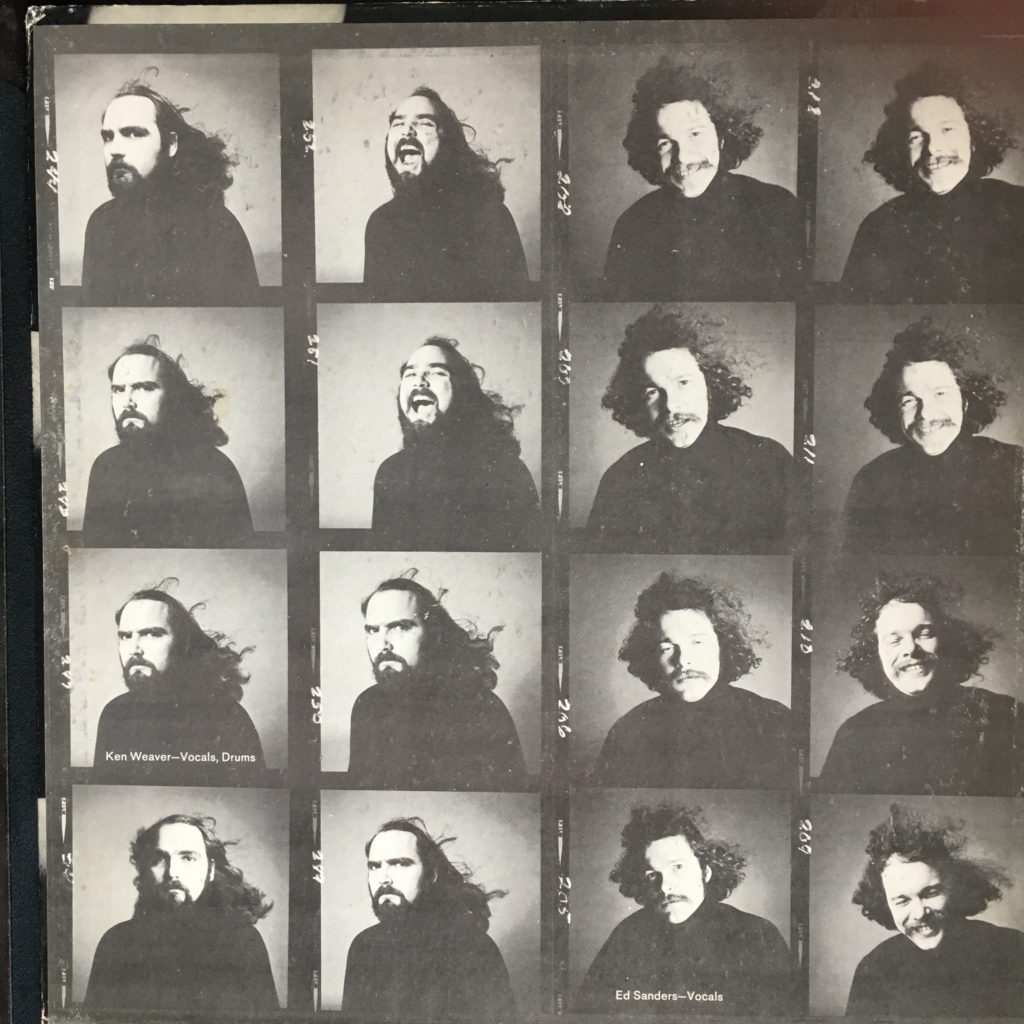
Tenderness Junction gatefold left 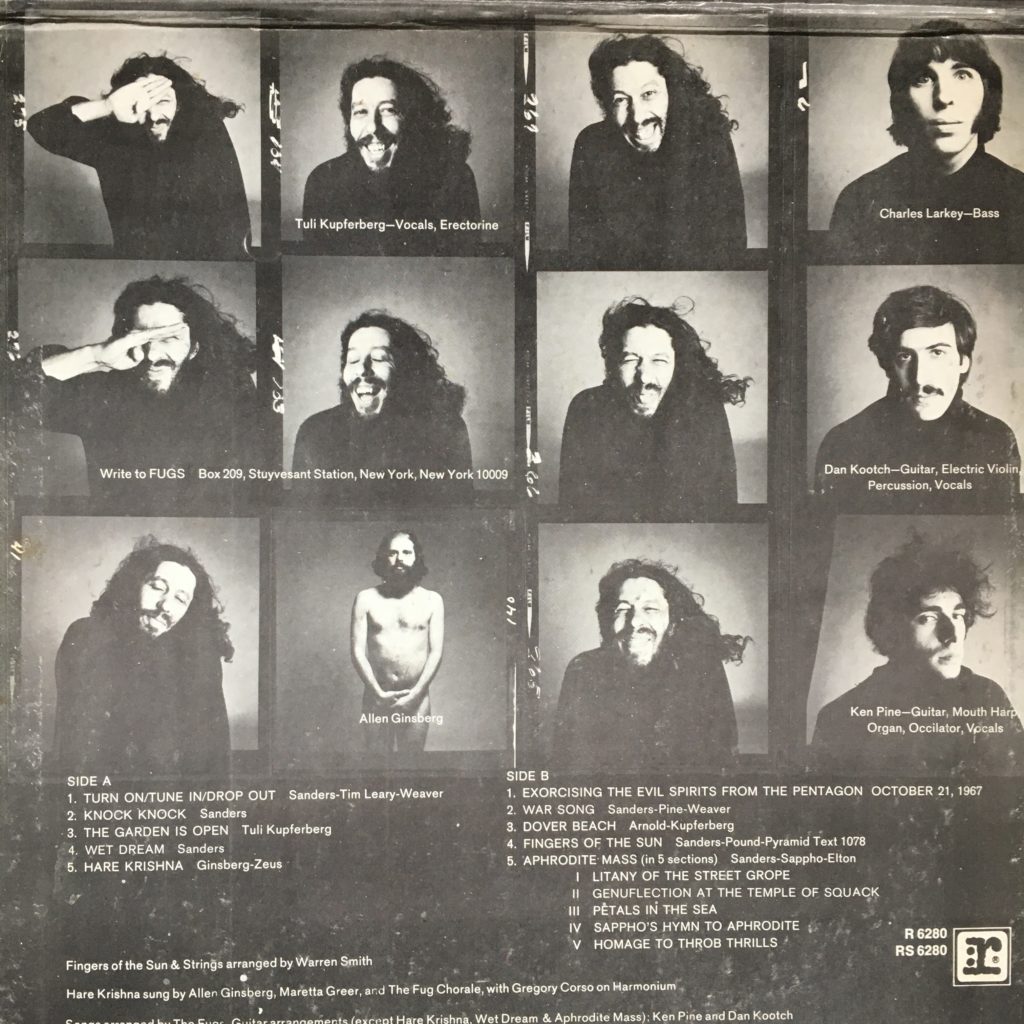
Tenderness Junction gatefold right 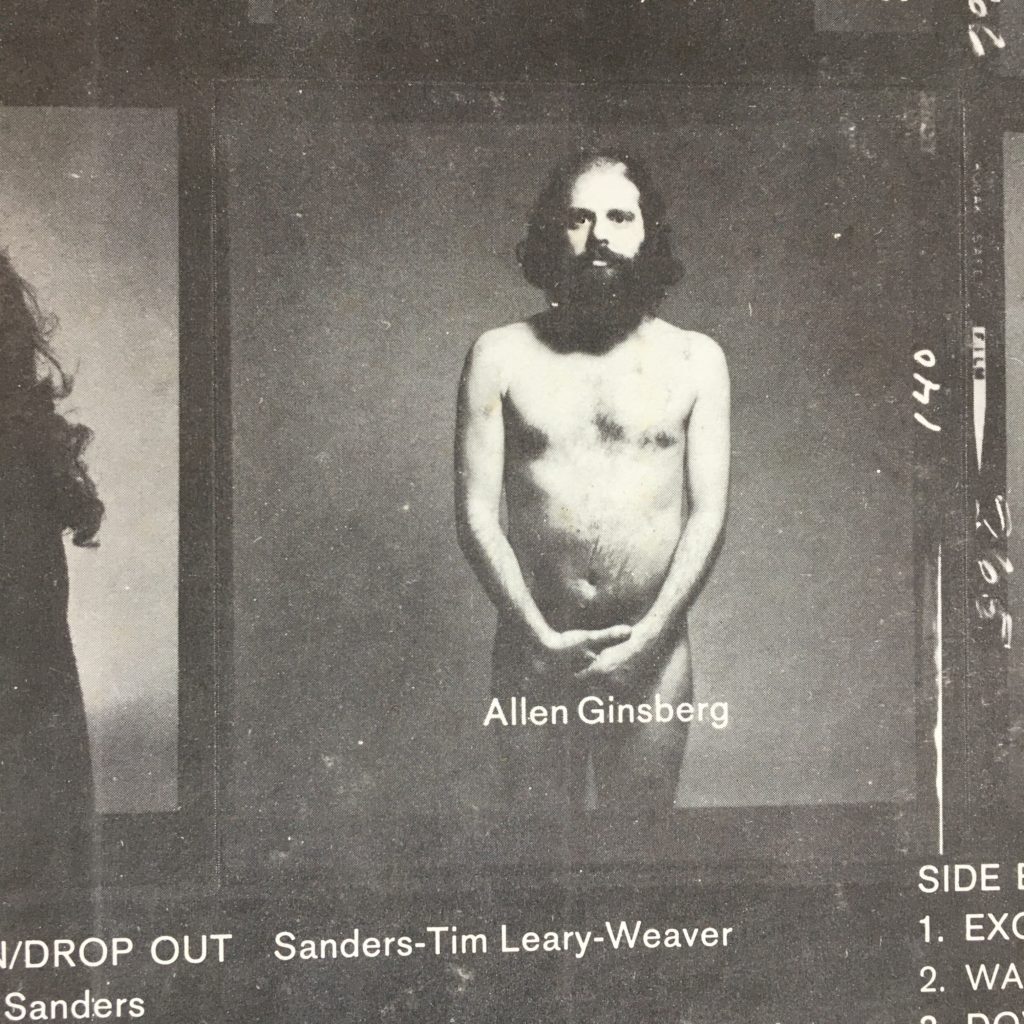
Allen Ginsberg 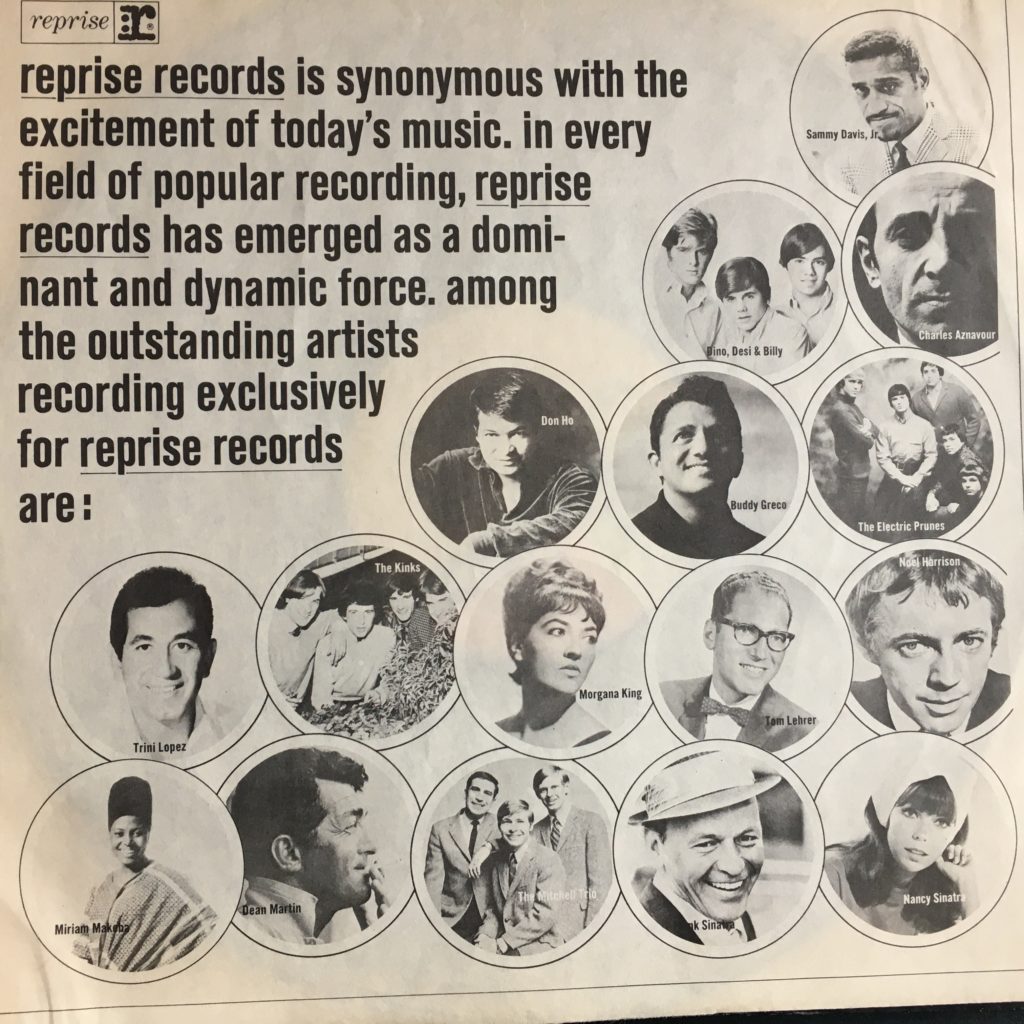
Reprise promo sleeve 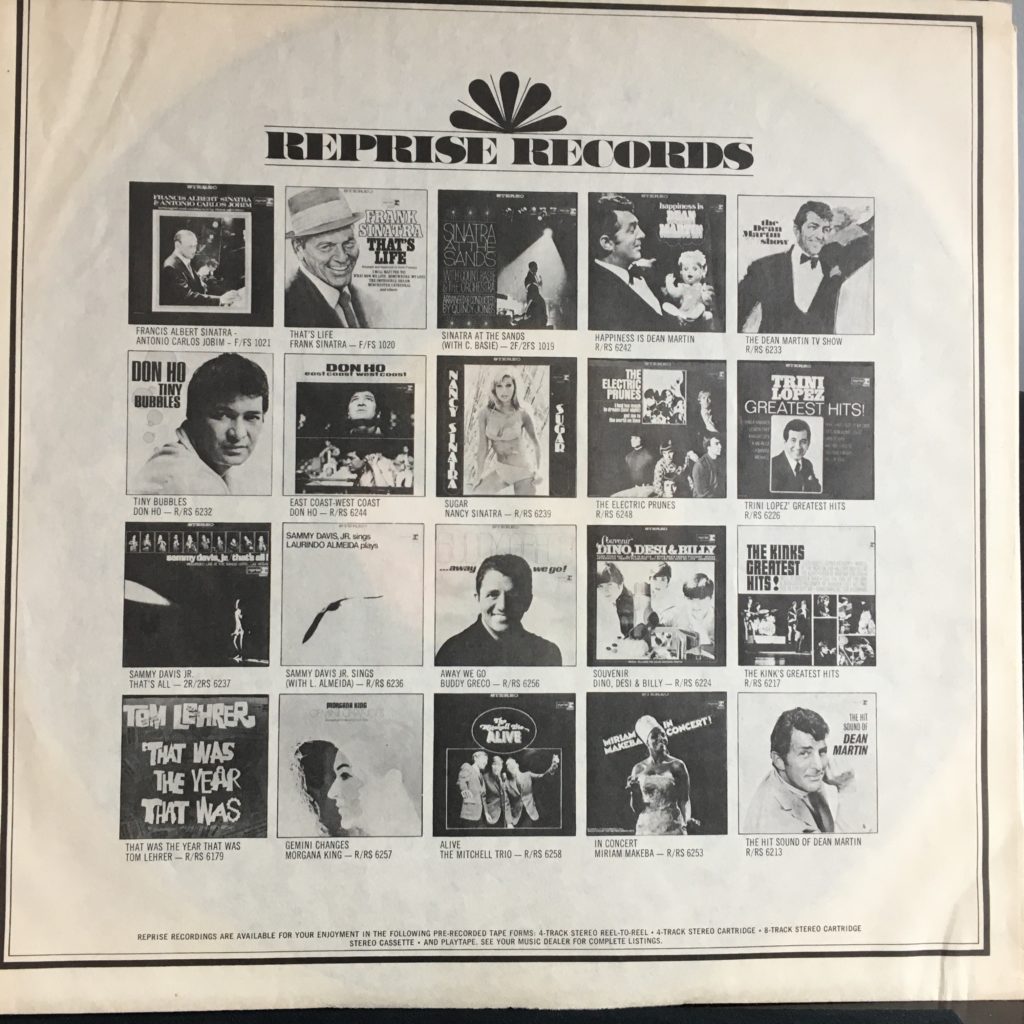
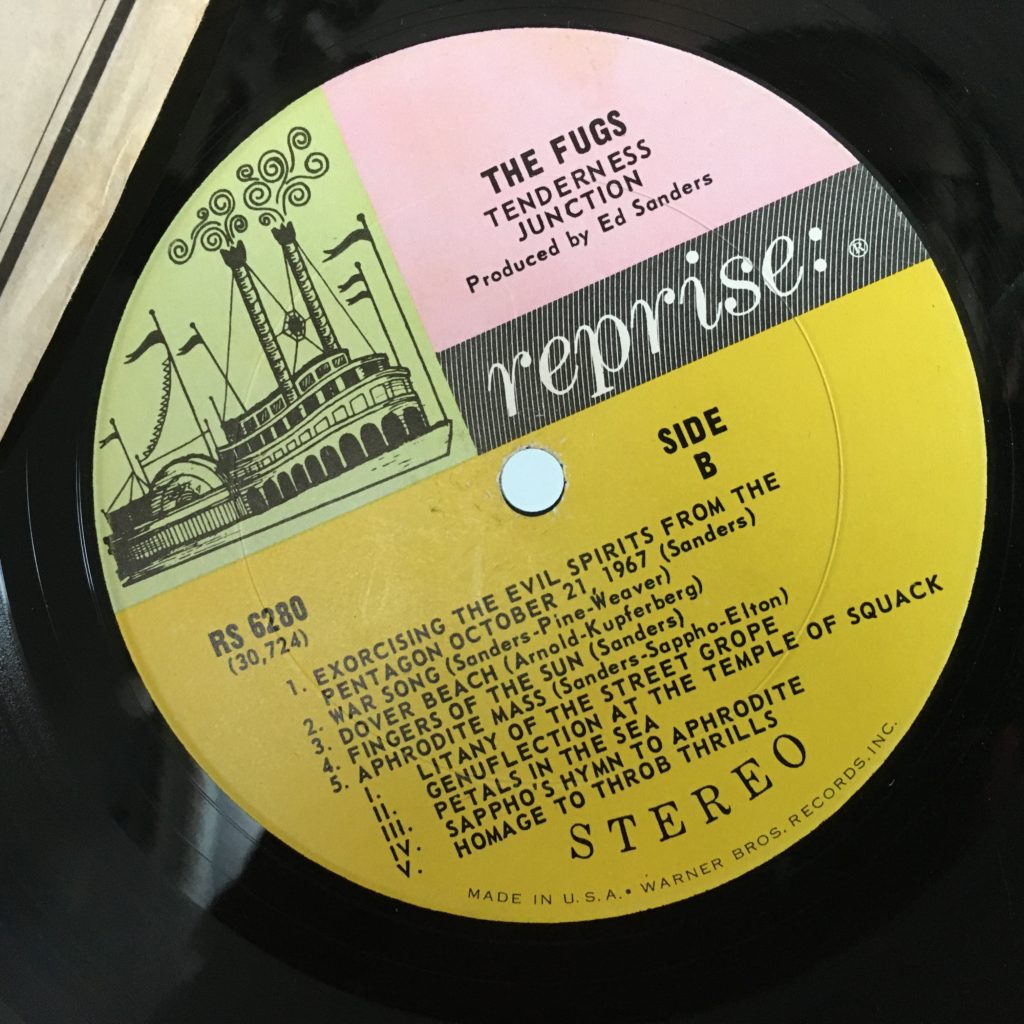
The Fugs were on Frank Sinatra’s record label.
